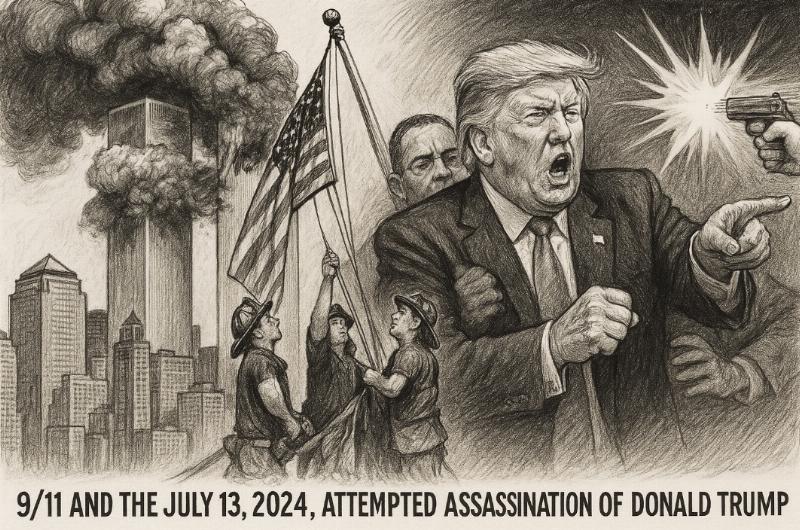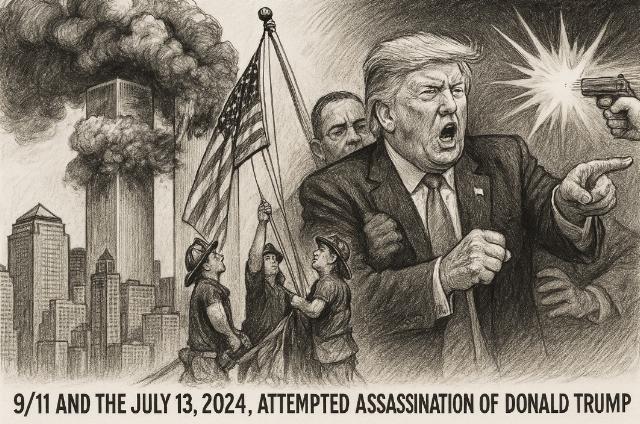


A year after Butler, a shocking bit of news dropped: top Secret Service officials knew about a “classified threat” against Trump in the lead-up to the Butler rally, but never notified on-the-ground operatives because of “silo-ism” within the organization. If that sounds familiar to you, it’s because this is the same failure that helped lead to 9/11! Our government seems incapable of learning.
The New York Post has a good summary of the latest, and really shocking, revelations:
Senior-level Secret Service officials failed to share “classified threat information” related to President Trump with those assigned to protect him during the Pennsylvania campaign rally where he was nearly assassinated, according to a congressional watchdog report.
The Government Accountability Office (GAO) found the classified intelligence had been presented to Secret Service officials a full 10 days before the July 13, 2024 assassination attempt in Butler, but the agency’s “siloed practice for sharing” sensitive information resulted in few being aware of the threat against Trump’s life.
“[T]he Secret Service had no process to share classified threat information with partners when the information was not considered an imminent threat to life,” read the GAO report, released Saturday by Sen. Chuck Grassley (R-Iowa).
Reading that literally sent shivers down my spine. That’s because it felt like 2001 all over again.
According to the 9/11 Commission Report, one of the primary reasons that 9/11 happened was that the various intelligence agencies weren’t talking to or coordinating with each other. Pardon me for quoting at length, but it’s chilling to see the government making the same mistakes all over again:
In July 1995, Attorney General Reno issued formal procedures aimed at managing information sharing between Justice Department prosecutors and the FBI. They were developed in a working group led by the Justice Department’s Executive Office of National Security, overseen by Deputy Attorney General Jamie Gorelick. These procedures—while requiring the sharing of intelligence information with prosecutors—regulated the manner in which such information could be shared from the intelligence side of the house to the criminal side.
These procedures were almost immediately misunderstood and misapplied. As a result, there was far less information sharing and coordination between the FBI and the Criminal Division in practice than was allowed under the department’s procedures. Over time the procedures came to be referred to as “the wall.” The term “the wall” is misleading, however, because several factors led to a series of barriers to information sharing that developed.
The Office of Intelligence Policy and Review became the sole gatekeeper for passing information to the Criminal Division. Though Attorney General Reno’s procedures did not include such a provision, the Office assumed the role anyway, arguing that its position reflected the concerns of Judge Royce Lamberth, then chief judge of the Foreign Intelligence Surveillance Court. The Office threatened that if it could not regulate the flow of information to criminal prosecutors, it would no longer present the FBI’s warrant requests to the FISA Court. The information flow withered.
The 1995 procedures dealt only with sharing between agents and criminal prosecutors, not between two kinds of FBI agents, those working on intelligence matters and those working on criminal matters. But pressure from the Office of Intelligence Policy Review, FBI leadership, and the FISA Court built barriers between agents—even agents serving on the same squads. FBI Deputy Director Bryant reinforced the Office’s caution by informing agents that too much information sharing could be a career stopper. Agents in the field began to believe—incorrectly—that no FISA information could be shared with agents working on criminal investigations.
This perception evolved into the still more exaggerated belief that the FBI could not share any intelligence information with criminal investigators, even if no FISA procedures had been used. Thus, relevant information from the National Security Agency and the CIA often failed to make its way to criminal investigators. Separate reviews in 1999, 2000, and 2001 concluded independently that information sharing was not occurring, and that the intent of the 1995 procedures was ignored routinely. We will describe some of the unfortunate consequences of these accumulated institutional beliefs and practices in chapter 8. [Endnotes omitted.]
The attack on America on 9/11 was what I call a “hinge point” in history. It’s one of those moments where, suddenly, everything changes and the path on which a nation seems to be traveling abruptly switches to something completely new.
Had Donald Trump been assassinated, that would have been another hinge point. Kamala Harris would have become president, completing America’s swift slide into dysfunctional socialism and irrelevance. Additionally, having Trump’s head shattered like a shot watermelon on HDTV would have inflicted a national trauma that would have made the Kennedy assassination, with its blurry Zapruder Film, seem almost inconsequential.
It's times like these that make you realize that our government isn’t merely too big. It’s also dysfunctional, whether because the systems are simply breaking down, because of generic bureaucratic incompetence, or because this is what you get when Democrats control any institution—especially Democrats who don’t particularly like Donald Trump.

Image created using ChatGPT.
